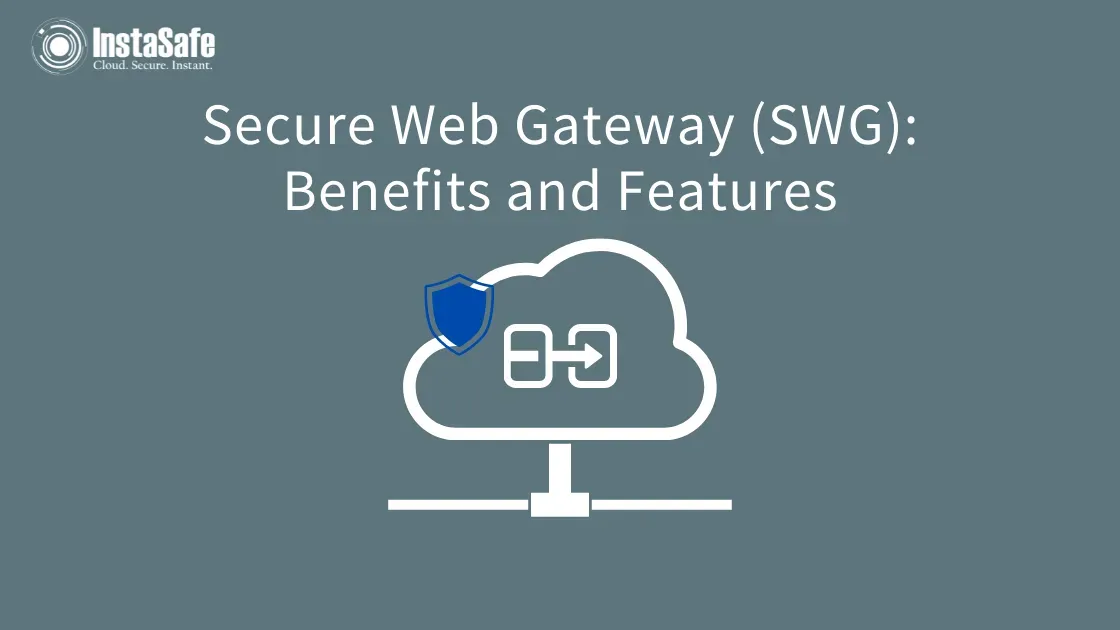What is Secure Web Gateway (SWG)? - Benefits and Features

Ensuring network security and taking into account who accesses your network and its critical applications is highly important, considering today’s growing cybersecurity threats and online risks.
Malicious hackers can access the network from anywhere, from weak employee passwords or network vulnerabilities. Thus, enforcing secure corporate access policies and Secure Web Gateway (GWB) is essential to prevent unauthorised access to the company network.
Another effective way is domain joining, which allows employees to establish a secure remote connection to the company domain using enterprise credentials and remote devices, allowing them to join that domain securely and efficiently.
In this article, we’ll learn more about Secure Web Gateway and its benefits for your company’s network and security.
Understanding Secure Web Gateway (SWG)
SWG, or Secure Internet Gateway, is a cybersecurity solution that protects your organisation from online attacks and security risks by enforcing corporate policies, filtering incoming network traffic, and enabling you to easily monitor and prevent unauthorised access to the network.
Thus, it inspects the network’s user requests against corporate company policies and updated security protocols to prevent malicious users and applications from accessing your network.
Moreover, when you implement the join active directory domain, it helps push group policies to remote users and devices, enables control over security updates and patches, and ensures compliance with security protocols.
Some of the important next-generation Secure Web Gateway features include:
- URL filtering allows you to control and manage website access based on URLs, preventing employees from accessing malicious content.
- Application control with granular security policies allows you to limit or block access to web applications.
- Antivirus to detect and remove software bugs, like trojans, viruses, and adware.
- Data loss prevention (DLP) prevents the loss of critical and sensitive data and information while adhering to compliance standards and regulations.
- HTTPS inspection to secure and scan SSL-encrypted user traffic that passes through the gateway.
After looking at the features, let’s look at the excellent benefits of SWG and a secure domain controller for your network security.
Benefits of Secure Web Gateway (SWG) For Your Company Network
Here are the key benefits of SWG for your network security and secure domain joining and protection.
Threat detection and prevention
A Secure Web Gateway easily detects and identifies security threats, malicious code, and vulnerable data concerned with the website content.
Typically, the gateway proxy goes through the entire session’s data before taking any action to resolve vulnerabilities and ambiguities. As a result, it removes the chances of security attacks damaging the company network through policy violations, putting operations and processes at risk.
Secure Web Gateways perform 24/7 constant network monitoring of the web traffic and incorporate attack signatures into multiple detection capabilities.
Encrypted traffic threats exposure
Decrypting the SSL traffic requires substantial processing capabilities and memory. However, this hampers the overall network and security performance and allows most SSL traffic to access and pass through without efficient inspection.
Highly reliable and sophisticated secure gateways provide maximum control over the SSL traffic and SSL inspection to analyse threats, cyberattacks, and policy or compliance violations.
Regulatory compliance requirements
SWGs offer granular access control over the company’s network, data, and applications. Hence, it is easier to apply security policies and measures to specific data per regulatory compliance.
The gateway categorises incoming web traffic based on attributes like HTTPS, HTTP, and application name. This categorisation enables the enforcement of data regulations, like Payment Card Industry (PCI) Data Security Standard and General Data Protection Regulation (GDPR).
Besides, it lets you ensure AD/LDAP compliance by all remote devices outside the company or corporate domain. This granularisation allows you to strengthen your compliance efforts and facilitates greater risk management.
Better monitoring and visibility
New websites and content keep getting published on the web and browsers each second, as we’re speaking, representing new attack vendors and security threats to corporates.
It’s difficult to fight against such evolving threats, and most website traffic easily bypasses security measures and firewalls.
However, when you implement SWG or join a domain securely, it helps monitor each minute of activity and log events happening across the company network. This logging and consistent monitoring provide better control and visibility over the web traffic, allowing you to create better web security policies per your business needs and requirements.
Enhanced security
SWGs seamlessly integrate with other robust security solutions and the existing web infrastructure.
It forwards authentic traffic adhering to the organisation’s security protocols and policy requirements. When traffic doesn’t follow the policy requirements, SWGs apply policies that meet and fulfil the company’s goals and objectives. Hence, SWGs maximise and boost the existing security investments for the organisation while extending its security across various verticals.
Conclusion
A Secure Web Gateway is an excellent solution to protect employees and users from potential cybersecurity threats and attacks. They help authenticated users and employees join the company domain securely through a secure tunnel. So, if you need a secure domain joining service for your organisation, check out our Zero Trust solutions at the InstaSafe company. Check the pricing and features, and book a demo today to learn more.
Key Products
Multi Factor Authentication | Identity And Access Management | ZTNA | Zero Trust Application Access | Secure Enterprise Browser
Key Features
Single Sign On | Endpoint Security | Device Binding | Domain Joining | Always On VPN | Contextual Access | Clientless Remote Access | Device Posture Check
Key Solutions
VPN Alternatives | DevOps Security | Cloud Application Security | Secure Remote Access | VoIP Security
